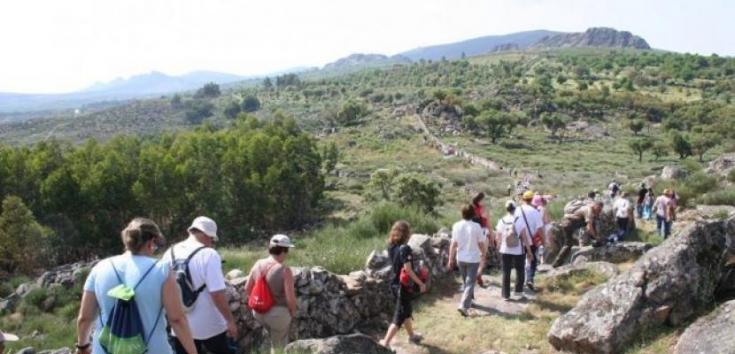
Cultural routes II: Reviving cultural routes
RAMSAT project will be present in Interreg Europe Policy Learning Platform thematic webinar on 25 October 2022.
Mountains have always had a symbolic and metaphorical meaning, evoking an experience of spiritual elevation. In the latest years, they grow as a tourism destination because of their landscape which provides the opportunities to escape from the increasingly urbanized environments.
However, this considerable potential for tourism remains often misused, through the mass tourism that harms the fragile biodiversity and the uniqueness of these areas, or unused, with the local population and businesses left alone and unable to benefit from it.
RAMSAT is designed to protect the natural and cultural heritage of Remote And Mountainous areas through Sustainable Alternative Tourism.
To achieve this goal, RAMSAT set up 2 Interregional Workshop, 4 Thematic Seminars and 36 meeting with local stakeholder, all along Europe: from the Pleven Heights (BG) to the Natural Park of the Serra of S. Mamede (PT), passing through the Marginimea Sibiului (RO), the Sava Hills (SI), the Iberian Sistem (ES) and the Sperrin Mountains (UK-NI).
For 36 months, the project partners will transfer knowledge, identify good practices and exchange experience from regions where these policies have been already developed and put into effect, with the overall objective to preserve, promote and develop the natural heritage of their territories, while strengthening economic and social cohesion.
Balancing environmental, economic, and socio-cultural aspects, the partners will develop action plans to protect the biodiversity and preserve the natural environment while increasing the number of visits to sites of cultural and natural heritage.
€1,049,130.00
Environment and resource efficiency
The action considered in the policy instrument has the specific objective: Promote the natural and cultural heritage valuation, affirming the region as a tourist destination of excellence.
It is expected to have a double effect on the regional productive base, resulting in the improvement of the attractiveness of the Region (for tourists, visitors, etc.) through the support to several actions that include:
- actions to take advantage of the potential assets
- improvement of reception conditions and interpretation of natural areas with a touristic interest
- tourism valorization of the reservoirs and courses of internal waters, in a logic of circuits/itineraries constitution with diverse offers to the water courses' use
- promotional programs and actions in territories of high natural, cultural and landscape value (protected areas/classified with tourism relevance) and aimed at strengthening the region visibility, creating new audiences and attracting tourists (specific marketing plans)
- valuable natural landscape operations that create amenities
- upgrading river areas and heritage restoring actions
In terms of improvement, the objective is to contribute to solving the major problem in the region concerning limitations and challenges that the European community is facing regarding ecotourism, especially in areas with an important historical and natural value.
The Autonomous Community of Aragon has an important physio-geographical diversity, which results in a rich natural heritage. Potential that has led to a significant growth of so-called ecotourism, boosted in recent years, in addition, by the economic crisis. Proof of this is the inclusion in the RIS3 Aragón, tourism as a priority sector of the Aragonese activity, highlighting two of the areas in which Aragón differs from other regions and where it has the greatest potential for growth, such as tourism based on cultural and natural heritage.
The number of people who opt for rural ecotourism or environmentally friendly tourism in Aragon has increased, However, the number and the duration of overnight stays have been reduced, which highlights the need to continue advancing in the economic valuation of natural assets, particularly in the most fragile areas, especially rural and mountain areas.
The OP is quite wide and it doesn’t address the way of fighting against problems as heritage remains often unused or underused, and eventually, it’s being destroyed or degraded. Not only it doesn’t focus on mountain and rural areas but also it doesn’t appoint the immaterial heritage and its need of being preserved.
The budget for the region is 18.203.520€+2.140.000€ for the Province of Teruel. This PA must be completed with new measures considering the demographic reality of the region. The area is really depopulated, ageing and spread out society, which makes it easy to be despoiled.
The Strategic and Local Growth Plan (2018) for Derry City & Strabane District Council area is a statutory requirement of Council as part of the Community Planning process established by the Local Government Act 2014. This is a process whereby the voluntary and community sector, statutory bodies and local councils develop and implement a shared vision for promoting the well-being of the area and to pave the way for the more efficient use of resources.
A key focus of The Strategic Growth Plan is to establish a world-class visitor experience and make the area a destination of choice by developing and promoting our heritage assets through site preservation and capital investment.
Through RAMSAT we will address this in line with Programme Priority Axes 4, Investment Priority 6 (c), Specific Objective 4.2.
Local council authorities have a statutory responsibility to lead community planning, specifically to identify the entities operating in their area that they will need to help them plan and provide services, and publish progress of outcomes every 2 years.
Central government departments must participate in and assist the Council, perform actions in the Plan, and promote and encourage their involvement in local delivery.
RAPID is working closely with Derry City & Strabane District Council in order to address the sustainable development of the Sperrin Mountains, an Area of Outstanding Natural Beauty which is currently underdeveloped and underutilised as a tourism destination.
Please describe the main features of this policy instrument (e.g. objective, characteristics, priority or measure concerned) and the reason(s) why it should be improved. Zasavje Regional Development Program 2014-2020 (RRP) analyzes the regional development potential, identifies key development obstacles, advantages of the region and position of the region in international space. It defines, justifies and describes the development priorities of the region, where the emphasis is also given on the preservation and the sustainable exploitation of cultural & natural heritage through tourism.
However, the emphasis is mainly given on the heritage in urban areas and not enough in the rural and mountainous areas, where it can also be found. For that reason, the RRP should be improved to support the preservation and the sustainable exploitation of cultural and natural heritage through alternative tourism in the remote regional areas. With such an improvement, RRP would also take into account specific need of the regional rural and mountainous areas.
The Regional Operation Program (ROP) theme Objective 7 deals with Diversifying local economies through the sustainable development of tourism.
According to the national needs, this objective has the priority to increase the number of jobs in underdeveloped areas by enhancing local tourism. More, the objective aims at developing tourism infrastructure in order to increase accessibility in certain areas. It is important to underline that the objectives address only traditional tourism resorts.
We consider that the sustainable use of natural and cultural heritage in mountain areas, EDEN Destinations (European Destinations of Excellence in Tourism) or Eco Destinations need to be addressed by this policy instrument in order to develop alternative tourism. There is a need to improve accessibility to cultural and natural resources as well as tourism infrastructure (such as bike routes, thematic routes) in remote and mountain areas, in order to boost sustainable development, increase the number of jobs and contribute to the development of local economy.
The OP “Regions in Growth” 2014-2020, "PA Regional Tourism" supports infrastructural measures for the conservation, promotion and development of cultural heritage of national and world significance.
Its main focus is to valorize the unexplored potential of the cultural tourism in the regions and in its sustainable development, taking advantages of the variety, uniqueness and the authenticity of the natural heritage, balancing between the development of the tourism and the conservation of the resources.
Priority Axis 6 also contribute to the “Environment and protection of natural richness and cultural and historical heritage” which is part of priority 3 “Connectivity and green economy for sustainable growth”.
Oriented to the conserve the cultural heritage, the policy instrument also stimulates its popularization and development as a potential to attract tourists, through conservation, restoration, tourist guiding services, etc.. Furthermore it assist the development of tourist products and market information (i.e., marketing researches and impact analyses, creation of tourist packages and advertising activities) and the improvement of the awareness concerning the cultural heritage and its preservation and conservation.

RAMSAT project will be present in Interreg Europe Policy Learning Platform thematic webinar on 25 October 2022.
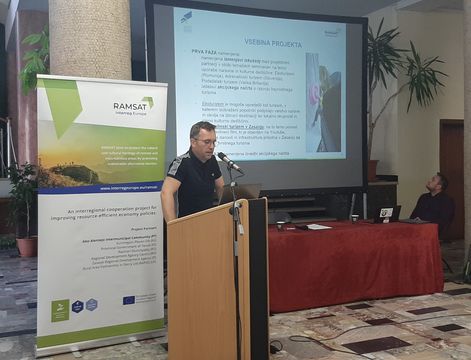
A regional tourism conference 2021 was organized by Zasavje regional development agency on July 14th.
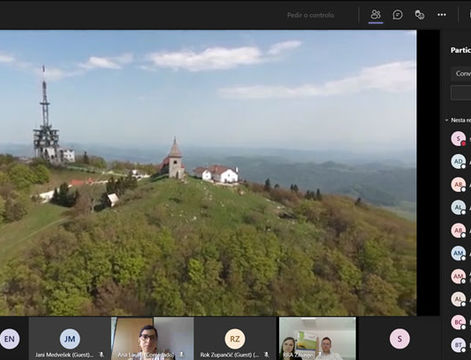
Hosted by Zasavje Regional Development Agency from Slovenia, it took place on 27th of May, the RAMSAT Thematic Seminar “Use of Natural and Cultural Heritage i...
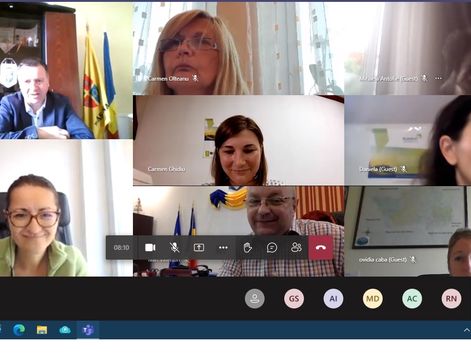
On the 18th of May, Rasinari Municipality, in articulation with Regional Development Agency Centru, performed the 4th regional stakeholders meeting, an online m...
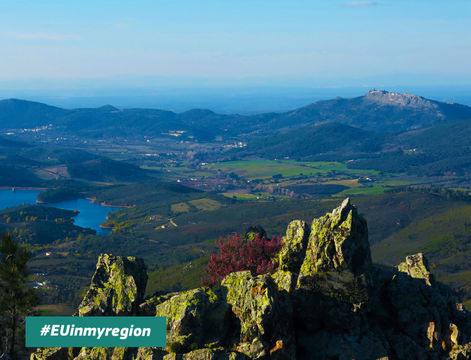
The European Commission picked a photo from RAMSAT project and turned it into a postcard.
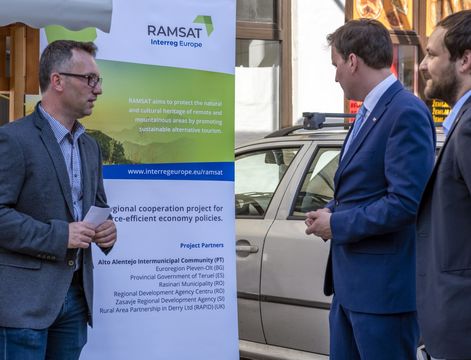
The Municipality of Hrastnik and Culture-recreation centre have officially opened new premises of Tourist information centre Hrastnik (TIC).
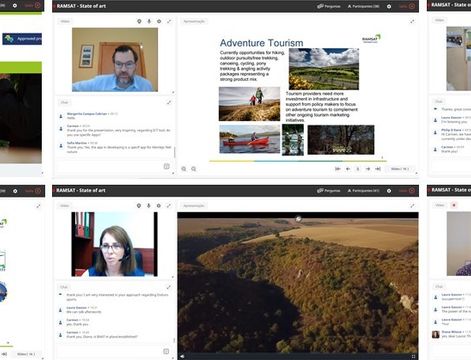
Hosted by the Association Euroregion Pleven-Olt from Bulgaria, it took place today the RAMSAT Project Interregional Webinar “State-of-Art”.
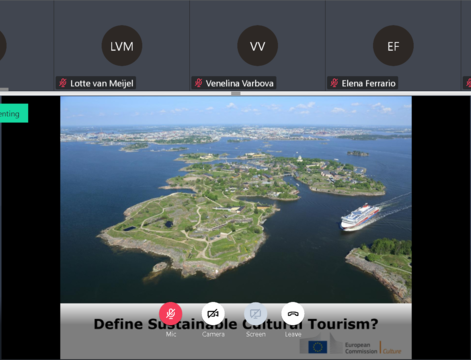
Interreg Europe Policy Learning Platform online discussion on sustainable cultural tourism as an opportunity for local development.
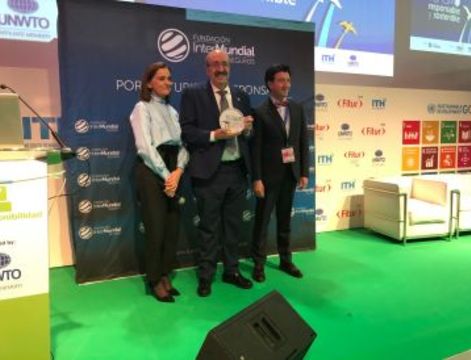
Provincial Government of Teruel, finalist in the Responsible and Sustainable Tourism Awards at FITUR.
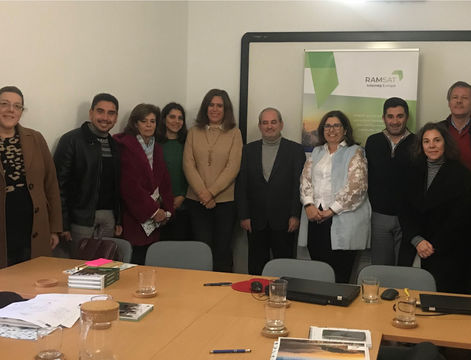
CIMAA organized the first stakeholder meeting of RAMSAT Project on December 11th December 2019, in its premises, in Portalegre.